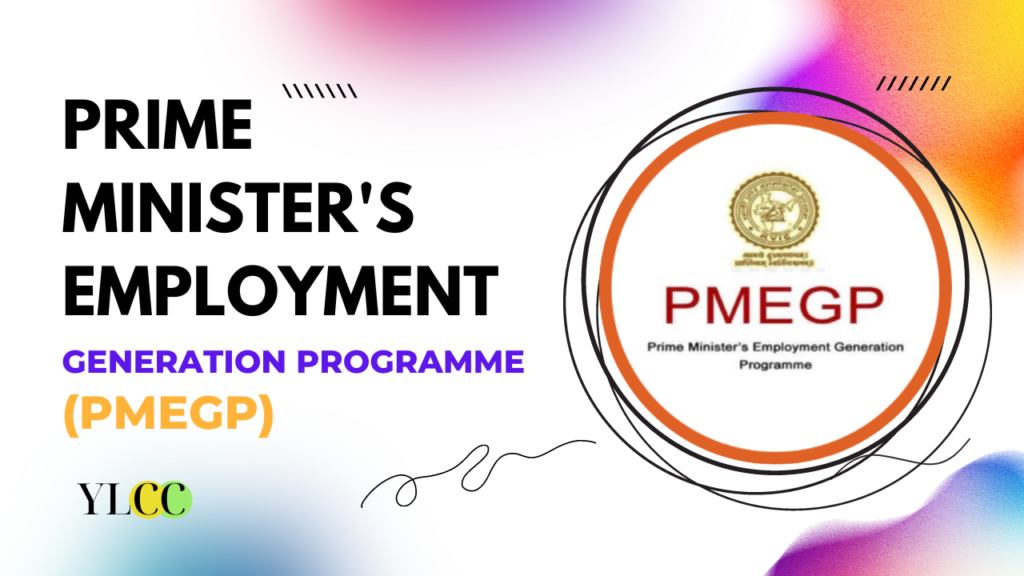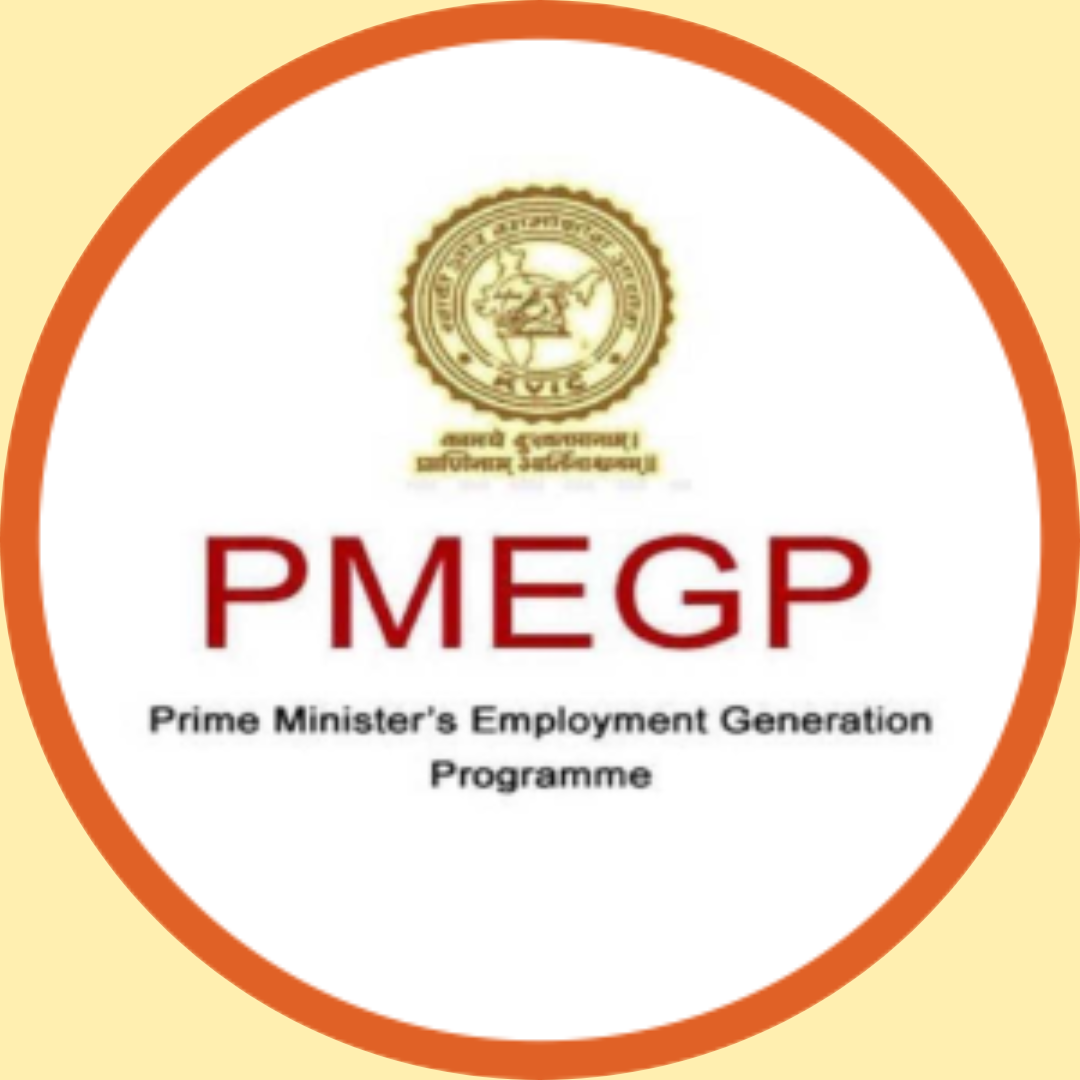
INTRODUCTION
The Prime Minister’s Employment Generation Programme (PMEGP) has supported approximately 780,000 micro enterprises since its establishment. These enterprises have received a substantial subsidy amounting to Rs 19,995 Crore and as a result, an estimated 6.4 million sustainable employment opportunities have been generated. Notably, around 80% of the assisted units are in rural areas, demonstrating the program’s focus on promoting entrepreneurship in these regions. Furthermore, approximately 50% of the supported units are owned by individuals from socially disadvantaged categories, including Scheduled Castes (SC), Scheduled Tribes (ST), and women. (see here)
PMEGP is a flagship initiative of the Indian government that holds significant importance for aspiring entrepreneurs and was launched in 2008. This initiative aims to promote self-employment opportunities and generate sustainable employment for the country’s growing workforce. The primary objective of PMEGP is to create micro-enterprises by providing financial assistance and support to entrepreneurs across various sectors.
PMEGP focuses on fostering a culture of entrepreneurship by offering financial assistance for starting new ventures or expanding existing ones and aims to empower individuals with the necessary resources and support to establish prosperous enterprises, thereby creating job opportunities not only for themselves but also for others in their communities.
OVERVIEW OF PMEGP
With the vision of “Prosperous India, Employed India”, PMEGP strives to promote inclusive growth by encouraging entrepreneurship among different sections of society, including women, SC, ST, and other backward classes. The program ensures that financial assistance is accessible to those with the potential and ideas but lack the necessary resources to bring them to fruition.
The PMEGP enables entrepreneurs to procure machinery, equipment, and other essential resources required to establish or expand their businesses. and also offers training programs and capacity-building initiatives to enhance their skills, knowledge, and management capabilities.
Through PMEGP, the government aims to unleash the entrepreneurial spirit of individuals and facilitate the growth of a robust micro-enterprise sector. The program not only reduces unemployment but also contributes to poverty alleviation and overall economic development.
The key features
- It was launched in 2008 by the Ministry of Micro, Small and Medium Enterprises (MSME) in collaboration with the Khadi and Village Industries Commission (KVIC) and the District Industries Centers (DICs).
- The programme replaced the erstwhile Prime Minister’s Rojgar Yojana (PMRY) and Rural Employment Generation Programme (REGP) to provide a more comprehensive and streamlined approach to promoting self-employment.
- In the manufacturing sector, the maximum allowable cost of a project or unit under PMEGP is ₹25 lakhs, while in the business/service sector, it is ₹10 lakhs.
- The rate of subsidy provided to beneficiaries depends on the category and location of the project/unit. For the general classification in urban areas, the subsidy rate is 15%, while in rural areas, it is 25%. For special categories, including SC/ST/OBC/minorities/women, ex-servicemen, physically handicapped individuals, as well as projects located in the North Eastern Region (NER), hill areas, and border areas, the subsidy rates are 25% for urban areas and 35% for rural areas. The remaining amount of the total project cost will be financed by banks in the form of a term loan and working capital.
- It offers margin money to beneficiaries, which is the minimum contribution required from the entrepreneur towards the project cost.
- PMEGP assists entrepreneurs in accessing credit facilities by linking them with various financial institutions.
- Both new entrepreneurs and existing units can apply for assistance under PMEGP.
- PMEGP supports a wide range of sectors, including manufacturing, service, and trading industries. Some of the sectors eligible for assistance under PMEGP include agro-based industries, food processing, textiles, leather and leather products, handicrafts, and many more. Both rural and urban projects are considered, with a focus on promoting entrepreneurship in rural areas.
Any individual who is above 18 years of age can apply for assistance under PMEGP. For projects in the manufacturing sector with a cost exceeding Rs. 10 lakhs, the individual should have a minimum educational qualification of passing at least the VIII standard (see here). Similarly, for projects in the business/service sector with a cost exceeding Rs. 5 lakhs, the individual should have a minimum educational qualification of passing at least the VIII standard. It is important to note that only new projects are considered for sanction under PMEGP.
In addition to individuals, certain groups and institutions are also eligible for PMEGP. This includes Self Help Groups (including those belonging Below Poverty Line, provided they have not availed benefits under any other scheme), Institutions registered under the Societies Registration Act, 1860, Production Co-operative Societies, and Charitable Trusts.
However, there are certain exclusions. Existing units that have received assistance under schemes such as Prime Minister’s Rojgar Yojana (PMRY), Rural Employment Generation Programme (REGP), or any other government scheme at the central or state level are not eligible for PMEGP. Similarly, units that have already availed of government subsidies under any other scheme of the Government of India or State Government are also not eligible to apply for assistance under PMEGP.
THE KEY COMPONENTS
The PMEGP comprises two major components: the PMEGP itself and the Credit Linked Capital Subsidy Scheme (CLCSS). Additionally, the Khadi and Village Industries Commission (KVIC) plays an important role in the implementation of PMEGP. Let’s delve into each component and the role of KVIC in more detail.
Credit Linked Capital Subsidy Scheme (CLCSS):
The CLCSS provides credit facilities to entrepreneurs by linking them with various financial institutions. This scheme aims to facilitate easy access to credit for the implementation of projects. Under CLCSS, eligible entrepreneurs can avail of term loans and working capital loans from banks at subsidised interest rates. The scheme reduces the financial burden on entrepreneurs by providing them with credit facilities to meet the remaining project cost after availing subsidies from PMEGP. CLCSS ensures a smooth and streamlined process for obtaining loans by linking entrepreneurs with financial institutions, thus, enabling the entrepreneurs to implement their projects effectively.

Role and Functioning of the KVIC
As the nodal agency, KVIC facilitates the smooth operation and administration of the program. KVIC acts as the implementing agency at the national level, coordinating with various State Khadi and Village Industries Boards and District Industries Centers (DICs) for the effective execution of PMEGP. KVIC provides technical guidance, training, and mentoring support to entrepreneurs throughout the project implementation process. It identifies potential entrepreneurs, assesses project proposals, and approves financial assistance under PMEGP.
KVIC also monitors and evaluates the progress of projects supported under PMEGP to ensure their successful implementation and desired outcomes.
APPLICATION AND LOAN PROCESS FOR PMEGP
Application Process:
The State/Divisional Directors of the KVIC, in consultation with the Khadi and Village Industries Boards (KVIB) and the Director of Industries of respective states (for District Industries Centers), shall release local advertisements through various media platforms, including print and electronic, to invite applications and project proposals from prospective beneficiaries who wish to establish enterprises or start service units under PMEGP.
Beneficiaries have the option to submit their applications online through the official PMEGP website (see here). After completing the online application, they are required to take a printout of the application and submit it to the respective offices, along with a Detailed Project Report (DPR) and other necessary documents as specified by the authorities.
Loan Process
- Loan Application: Once the project is sanctioned under PMEGP, the entrepreneur needs to approach a financial institution, such as a bank, to apply for a loan. The loan application form is filled out with details about the project, financing requirements, and other relevant information.
- Documentation: Along with the loan application form, the entrepreneur must submit necessary documents, including the project proposal, identity proof, address proof, financial statements, collateral documents (if required), and any other documents specified by the lending institution.
- Loan Appraisal: The financial institution appraises the loan application, considering factors such as the entrepreneur’s creditworthiness, repayment capacity, collateral value, and the viability of the project.
- Loan Approval and Disbursement: Upon satisfactory appraisal, the financial institution approves the loan. The entrepreneur is then provided with the loan offer letter, loan agreement, and other relevant documents. Once the loan agreement is signed, the loan amount is disbursed as per the agreed terms and conditions.
- Repayment: The entrepreneur is responsible for repaying the loan as per the agreed repayment schedule, including principal and interest payments. The repayment terms and conditions are decided between the entrepreneur and the financial institution at the time of loan approval.
THE AMENDMENT
On May 30, 2022, the PMEGP received approval for continuation during the 15th Finance Commission Cycle, spanning five years from 2021-22 to 2025-26, with a total allocation of Rs. 13,554.42 Crore.
The program has undergone significant modifications and improvements, including the following:
- The maximum project cost for manufacturing units has been raised from Rs. 25 lakhs to Rs. 50 lakh, while for service units, it has been increased from Rs. 10 lakhs – Rs. 20 lakhs.
- The definition of village industry and rural area under PMEGP has been modified. Areas falling under Panchayati Raj institutions are now considered rural areas, whereas areas under municipalities are classified as urban areas.
- All Implementing Agencies are now authorized to receive and process applications from both rural and urban areas. This allows for a streamlined and unified application process, regardless of location.
- PMEGP applicants from aspirational districts and the transgender community will be treated as Special category applicants. They will be entitled to a higher subsidy rate, providing additional support for their entrepreneurial endeavours.
These modifications and improvements aim to enhance the effectiveness and inclusivity of PMEGP. The program strives to encourage more entrepreneurs, facilitate higher investments, and promote entrepreneurship in diverse sectors and communities by increasing the maximum project cost, redefining rural and urban areas, unifying application processing, and recognizing special category applicants.
This article has been written by Team YLCC. For any other queries, reach out to us at: queries.ylcc@gmail.com






